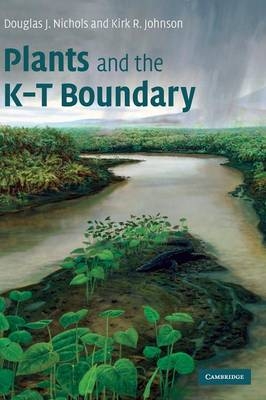
Plants and the K-T Boundary
Cambridge University Press (Verlag)
978-0-521-83575-6 (ISBN)
In this text, two of the world's leading experts in palynology and paleobotany provide a comprehensive account of the fate of land plants during the 'great extinction' about 65 million years ago. They describe how the time boundary between the Cretaceous and Paleogene Periods (the K–T boundary) is recognised in the geological record, and how fossil plants can be used to understand global events of that time. There are case studies from over 100 localities around the world, including North America, China, Russia and New Zealand. The book concludes with an evaluation of possible causes of the K–T boundary event and its effects on floras of the past and present. This book is written for researchers and students in paleontology, botany, geology and Earth history, and everyone who has been following the course of the extinction debate and the K–T boundary paradigm shift.
Douglas J. Nichols is a Research Associate with the Department of Earth Sciences at the Denver Museum of Nature & Science and a Scientist Emeritus with the United States Geological Survey (USGS). He received his Ph.D. in geology from The Pennsylvania State University before pursuing a career that has included university teaching, the oil industry, and 30 years of research with the USGS. Dr Nichols is a palynologist, with research interests in the fossil pollen and spores of Upper Cretaceous and Paleogene rocks, with emphasis on biostratigraphy, paleoecology, evolution, and extinction events. In 2005 he received the Meritorious Service Award from the U.S. Department of the Interior for his research on the biostratigraphy of nonmarine rocks and the Cretaceous-Paleogene (K-T) boundary in western North America. Dr Nichols is the author or coauthor of more than 140 scientific papers and has served as an editor of the journals Palynology and Cretaceous Research. Kirk R. Johnson is Vice President of Research & Collections and Chief Curator at the Denver Museum of Nature & Science (DMNS). He joined the DMNS in 1991 after earning his doctorate in geology and paleobotany at Yale University. Dr Johnson's research focuses on Late Cretaceous and early Paleogene fossil plants and landscapes of the Rocky Mountain region and is best known for his research on fossil plants, which is widely accepted as some of the most convincing support for the theory that an asteroid impact caused the extinction of the dinosaurs. He has published many popular and scientific articles on topics ranging from fossil plants and modern rainforests to the ecology of whales and walruses, and co-authored the book Prehistoric Journey: A History of Life on Earth.
Preface; Part I. Background: 1. Introduction; 2. Resolution of the K–T boundary; 3. Using fossil plants to study the K–T boundary; 4. Brief history of K–T boundary paleobotany and palynology; 5. Overview of latest Cretaceous and early Paleocene vegetation; Part II. Regional Case Studies: 6. Williston Basin - the most complete K–T sections known; 7. Other North American records; 8. Eurasia; 9. Remnants of Gondwana; Part III. Interpretations: 10. Assessment of the K–T boundary event; 11. Evaluation of scenarios for the K–T event; 12. Floral effects of the K–T boundary event; References; Index.
| Erscheint lt. Verlag | 15.5.2008 |
|---|---|
| Verlagsort | Cambridge |
| Sprache | englisch |
| Maße | 180 x 255 mm |
| Gewicht | 730 g |
| Themenwelt | Naturwissenschaften ► Biologie ► Botanik |
| Naturwissenschaften ► Biologie ► Ökologie / Naturschutz | |
| Naturwissenschaften ► Geowissenschaften ► Geologie | |
| Naturwissenschaften ► Geowissenschaften ► Mineralogie / Paläontologie | |
| ISBN-10 | 0-521-83575-5 / 0521835755 |
| ISBN-13 | 978-0-521-83575-6 / 9780521835756 |
| Zustand | Neuware |
| Haben Sie eine Frage zum Produkt? |
aus dem Bereich


